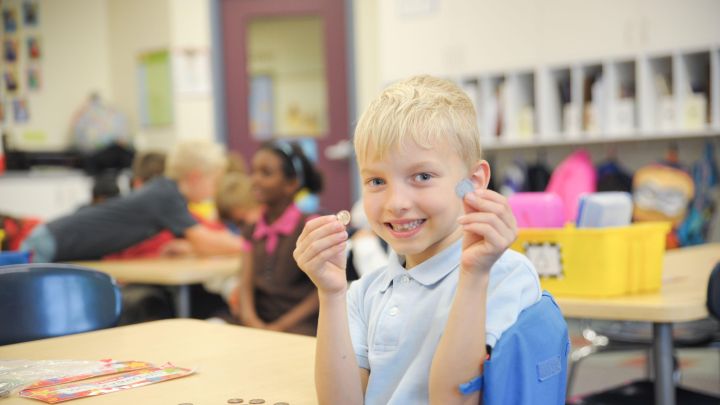Circles of Learning
Annapolis Area Christian Middle School eighth grade Bible teacher Susan Leonard shares how her whole class is benefiting from inclusive education in today's blog post.
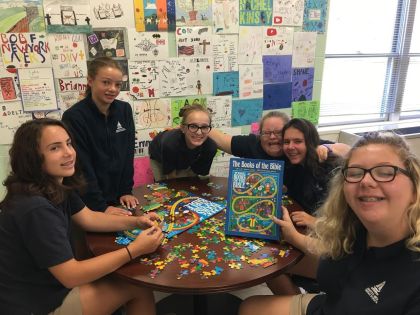
Jackie (third from right) and her classmates work on a Bible puzzle during the "Creation to Restoration Unit" wherein they learned God's history of salvation as a meta-narrative.
After Jackie arrived at our school, it became clear to us at Annapolis Area Christian Middle School (Annapolis, MD) that differentiation is first-century pedagogy. Jesus, the Master Teacher, believed his “students” were more than passive recipients. He taught them to reveal and image God’s character to a people made in the image of God. Jesus taught us to include others around us not for inclusion’s sake alone but to reveal the character traits of God: The first is last and the last is first. Leaders aren’t served by others, but others are served by leaders. Knowledge is not to be lorded over others, but used to bring glory to God. God is a God of relationships.
As Christians, we are intended to live as God’s “created analogies.” Our calling is to teach like Jesus, but sometimes we feel more like Sisyphus than the Master teacher, condemned to an eternity of rolling a boulder uphill then watching it roll back down again. We discuss and plan ways to best accommodate low and high-flyers, mitigate exclusion and build relationships. But if we are honest, it’s hard to build relationships in a classroom where there are wide gaps in each student’s ability and aptitude. C.S. Lewis once said, “What draws people to be friends is that they see the same truth. They share it.”
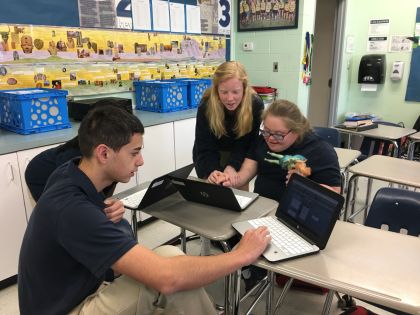
Jackie working on Quizlet Live with her eighth-grade team.
Jackie meets with her “Circle of Friends” each week, but how do we accommodate a student with Down syndrome in the classroom and build relationships? How do students who don't share equal abilities and aptitudes share truth?
In the first semester, the eighth graders studied the history of God’s salvation story from Creation to Restoration. We divided the Bible into fifteen topics ranging from Creation to the Fall, the Flood, the Tower of Babel and continued to the “Already but Not Yet” of the Gospels and the “Final Restoration.” Students memorized the books of the Bible and as a final semester project were tasked with this question: How can you tell the story of God’s history of salvation in a creative way and include the fifteen major topics?
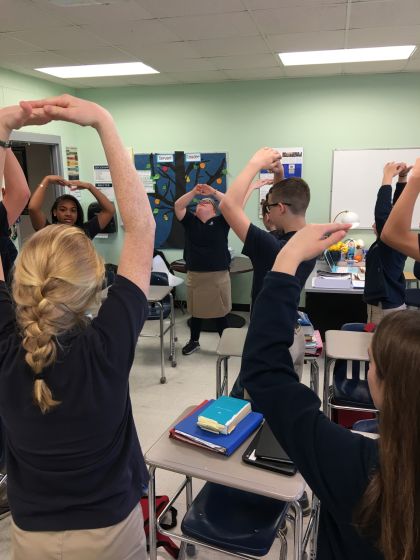
The eighth grade Bible class followed Jackie's lead as she signed the major themes in God's history of salvation.
Students responded with colorful floor puzzles, radio scripts, music raps, and poetry. Jackie told the story of Creation to Restoration in hand and body motion. She acted out each topic, raising her hands in a circle over her head for the world to represent “Creation,” and then dropped to touch her toes for “Fall.” She performed fifteen hand and body signs using both fine and gross motor skills, echoing a choral response from the class for each topic. Students made props to aid Jackie’s memory, such as stars for the “Call of Abraham” and a crown for “Kings.” Students handed her a prop and shouted the topic in order, and she repeated it back in circle-like fashion.
One day the class screamed with delight when Jackie remembered half of the topics on her own, both verbally and in signs. To our amazement, however, this wasn’t the only “aha” moment. What we’d stumbled upon was a “Circle of Learning.” Jackie taught the class the fifteen topics and God’s salvation story, even as she learned them. By signing the story together with the students, Jackie showed us a more vivid picture of the character of God:
Learners teach, and teachers learn. Inclusion isn’t including someone for inclusion’s sake, but for God’s. This is first-century pedagogy, and now our twenty-first century practice.
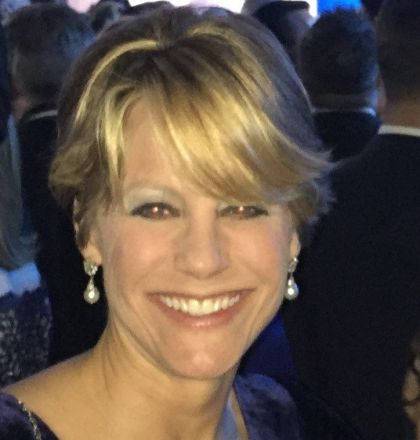
Susan Leonard is an eighth-grade Bible teacher at Annapolis Area Christian Middle School (Annapolis, MD).
